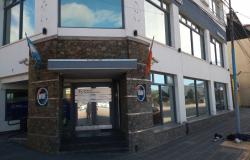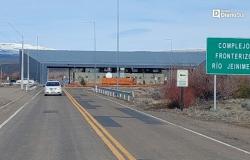Andrés Felipe Ardila was four years old when the war in Colombia made him displaced. Now, at 27, he fights to stop his family history from repeating itself. With word searches on touch screens and interactive maps, he gives lessons on human rights and how to defend them. “Education is the beginning of change,” says the aspiring lawyer as he walks with a dozen children through a room in the Germán Arciniegas library, in the city of Villavicencio.
The building temporarily houses the first traveling human rights museum in Colombia. A space run by the Ombudsman’s Office that has visited the departments of Antioquia and Chocó and which, according to the delegated defender for ethnic groups, Julio Balanta, aims to turn many people into “ambassadors and promoters of human rights.”
The task begins with the museum’s mediators, like Ardila. They are young people between 18 and 30 years old, linked to social work, whom the Ombudsman’s Office trains to guide the exhibition tours. The financing is provided by the Inter-American Development Bank, which seeks to help the Ombudsman’s Office serve the communities most in need. The museum, which was inaugurated by the then defender Carlos Camargo in Bogotá, in September 2023, began traveling by truck to other regions of the country in April 2024.
In the month since the exhibition has passed in Antioquia, the Pacific and the eastern Llanos, more than 6,000 young people have been trained to serve as support in their communities. The methodology is the most innovative, as it focuses on being playful. “Where I come from, many people don’t know that they have rights,” laments Ingrid Roca, museum mediator in Villavicencio and originally from Mapiripán, a town in Meta that in 1997 experienced one of the bloodiest paramilitary massacres, which left around of 49 deaths and the displacement of more than 500 families.
Given the cruelty of that past, the only possible present is change. Like Ardila, Roca believes that education is a good pillar to transform violence and change beliefs in his region and throughout Colombia. “The information we share here gives people tools to defend themselves and help others,” says the 29-year-old woman, after playing a game with sixth grade students, in which she explained to them what a guardianship action is for. , a popular action or a habeas corpus.
Newsletter
The analysis of current events and the best stories from Colombia, every week in your mailbox
RECEIVE THE
She did this through an activity with an interactive board that matches concepts with their definitions by color. It is a technological resource made possible thanks to the curatorship carried out by Maloka, the first interactive museum in Colombia, located in Bogotá. The intention is to bring a surprising experience to territories where it is rare to enjoy any type of museum.
“We feel privileged because in our daily lives we did not have spaces like this,” says Lanny Rojas about her experience as a mediator in Quibdó, where the museum was during the month of May. People like her, Roca and Ardila, explain to visitors the struggles of international figures, such as Malala, Martin Luther King or Nelson Mandela, to defend their people.
These young people, through games, teach school students the bases of fundamental rights and the history of the Social Rule of Law in Colombia. They are mediators who share the protection mechanisms that can be used: they teach a mother about the right to rest, an elderly person the process of a right to petition, a child the sentence that turned the Río Atrato into a subject of rights, or to any citizen the situations in which they can rely on the Ombudsman’s Office to demand justice. Especially in those territories where rights are most violated.
It is no coincidence that the museum began its journey in April in Caucasia, Antioquia, in an area devastated by organized crime and illegal mining. It is also not strange that in May he moved to Quibdó, capital of the department of Chocó, where, according to the Ombudsman’s Office, more than 14,000 people from 71 communities have been confined to their territories by armed groups so far in 2024. And even less that this month it will be exhibited in Meta, a region marked by the barbarism of groups such as the extinct United Self-Defense Forces of Colombia. According to defender Balanta, not even the capital of the department is spared from the upsurge in violence in the country. “In Villavicencio there is a disproportionate expansion of FARC dissidents,” he says.
The official hopes that in the remainder of 2024 the museum can move to critical areas of the conflict such as Cauca, Arauca and Nariño. In addition, the inhabitants of Bogotá can permanently enjoy a large part of the exhibition at the headquarters of the capital’s Ombudsman’s Office. Even if the exhibition could not reach places like Cauca, the message of protection of Human Rights could be relevant in any of the 430 municipalities that the Ombudsman’s Office currently has listed under threats of conflict in the country. A reality that, according to the Ombudsman, needs to be addressed with more than pedagogy.
“The public order panorama in the country is critical. We are demanding much more presence of the State in the territory so that we can live in peace,” warns Balanta, with a tone of urgency. Like him, Juan Kamilo Martínez, 12, has a suggestion to make to Colombia after a brief lesson on Human Rights: “We all have to respect and respect each other to stop making the same mistakes,” says the preteen from a library in the center of the country.
Subscribe here to the EL PAÍS newsletter on Colombia and here to the channel on WhatsAppand receive all the information keys on current events in the country.






